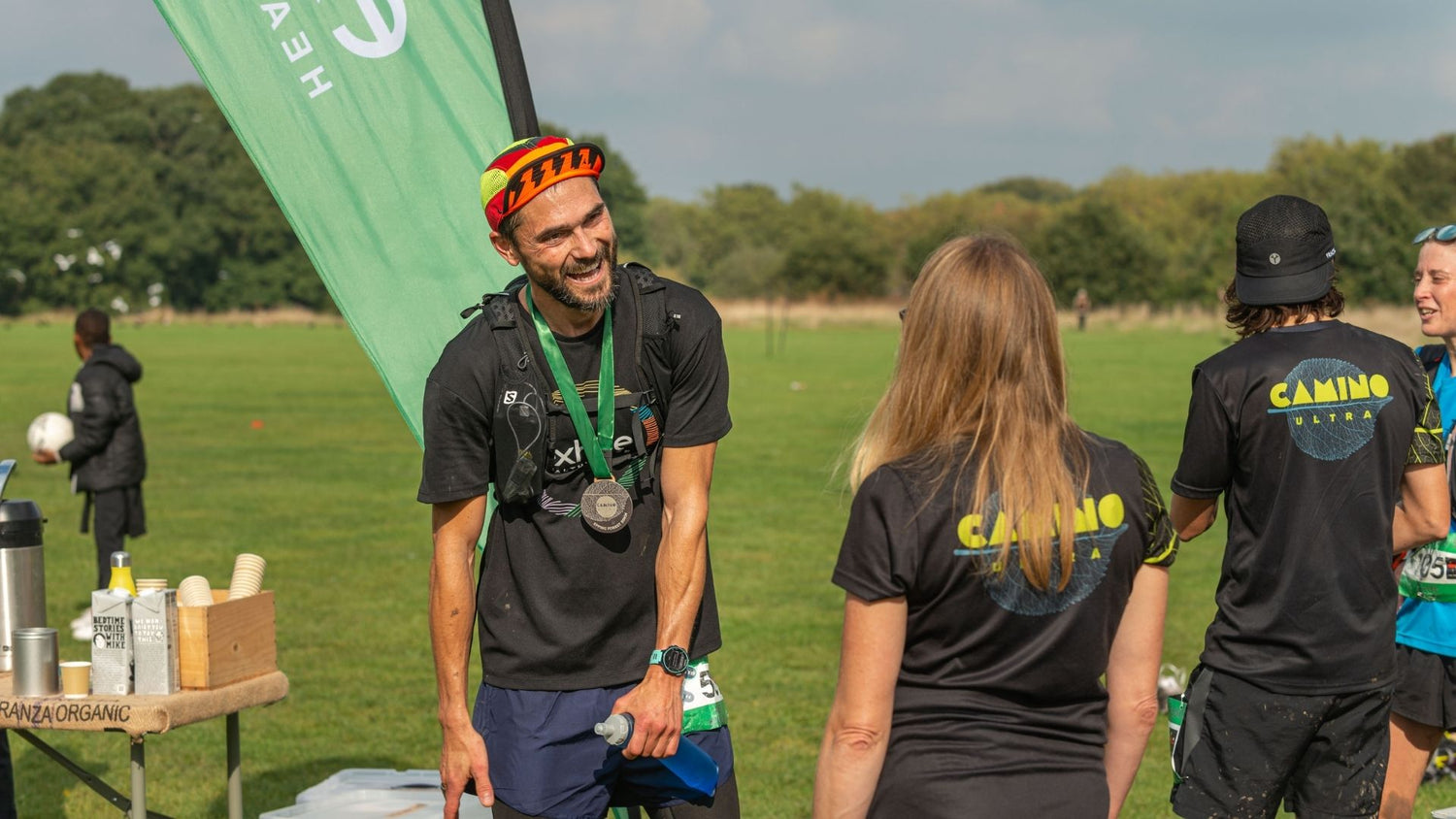Caveat before I get started: I am not a coach, and this method is untested. This is just what I’m doing from my experience to get ready as best I can.
Maybe in the future when I’ve actually finished a 100 mile ultra (!!) it might become more of a blueprint for a training manual, and not just a daydream. But right now, this is just what one seriously time-poor, sleep deprived dad is doing and hopefully it’ll entertain a few people along the way.
I’ll be doing some videos over on our Instagram to let you know how I’m getting on. So, if you’re keen for some badly recorded selfie videos of me running and talking about how I feel then you know where to go! (Don’t worry, I won’t talk about how I feel too much.)

Weekly training load
Running commute and work life
One of the biggest challenges of running a 100 mile ultra is having to be on your feet for 20+hours straight.
So, to get used to spending vast quantities of time standing, I run 25-30 minutes to and from work four days a week. Then I have a standing desk, so even when I get to the office, I’m on my feet all day long before running home in the evening.
Spending as much of the week as possible on my feet is key.
I got the idea from a guy who was the previous FKT (fastest known time) record holder for the Pennine Way for over 30 years before and John Kelly and Damien Hall stole his record. In the film Totally FKT'd he claimed that because he had a door-to-door job, he would run there, do his round and then run back. And, in spending so much time on his feet, by the time he came to do the race it was just like another day for him.
Strength sessions
Previously, the biggest thing holding me back in sport was injury so I've learnt the hard way that I need to seriously priorities it this time around! There's no point sticking the engine of a Ferrari in the chassis of a Mini, it'd fall apart. And that's what it's like if you build up an immense amount of cardio fitness without working on your conditioning too.
One of the most important things about adding strength training is to not only improve my running form but to stay injury-free—and touch wood, for the last two years I’ve managed to shake off injuries very quickly. Even when I do feel an injury or a niggle coming through, rather than static stretching (which I’ve found seems to aggravate injuries), I treat it with strength training which helps me recover so so so much faster.
(After a DNA test told me I was genetically deficient I’ve also added high doses of omega 3 and collagen into my diet to help reduce the risk of injury as well as this strength training schedule.)

Here’s my routine:
Once a week, on Wednesdays I do a boxing workout with a personal trainer in the park. And, on Monday, Tuesday, and Thursday mornings, I do a functional strength home gym workout in my living room. I get up a 6am to make this happen so I have two hours before the kids wake up. But the workouts themselves take around 30-40 minutes.
Monday morning – lower body pull
Single leg deadlift with kettlebell/weight
Double or single leg curl on a swiss ball
Adductor strengthening using a resistance band
Shin strengthening with a resistance band
Tuesday morning – lower body push
Step up (ideally onto something unstable), with sandbag/kettlebell/other weight
Single leg hip thrust with weight
Thursday morning – upper body
Finnis swim bands – swimming arms
Face pull
Paralette shoot through and dip
I do a set of the four exercises back-to-back, with a 1minute 30second rest in between. I’ll do as many rounds as I can in the 30-40minutes, with each exercise being roughly 15 reps.
I try and do it to a couple of reps away from exhaustion, so I adjust the weight accordingly. This is because these are functional training sessions meant to support my training, prevent injury and maintain strength so that I can go for a run afterwards, stand all day, and train happily the following day without feeling stiff and sore.

Weekend long runs
On the weekends I’ll do one two-four hour long run, trying to get as much elevation as I can. This tends to mean running some of the dullest residential streets in London again and again and again... Just to get as much elevation as I can to gain as much strength in my legs as humanly possible. For example, in December I did one that was literally 15 times up and down the steepest roads in London. It was the distance of a marathon and took just over 4 hours. It’s called the Highgate Claw and if you do it three times, it’s the length of a marathon with over 1000metres elevation.
Sunday = rest
Well, by rest I mean running around after two young children and cleaning and tidying up.
100 miles is a long way away
The longest run I’ve done so far was a 40 mile ultra in November. And then I’ve got the Centurion Running South Downs Way 50 miler in April, and then the Centurion Running South Downs Way 100 miler in June (where we’ll also have a coffee stand!). I expect the 100 miler to take me somewhere in the region of 20 hours but who knows!

Training continues (with a few challenges thrown in)
This is how I’m training for it now, to develop some really good base endurance, stamina and strength in to my legs to build the foundations. The biggest challenge by far though, is fitting all this in with two little kids who are demanding most of my time and a business that requires me to work 7 days a week. Sometimes into the early hours of the morning – and even through the night on occasion.
Wish me luck!
Al





Leave a comment
All comments are moderated before being published.
This site is protected by hCaptcha and the hCaptcha Privacy Policy and Terms of Service apply.